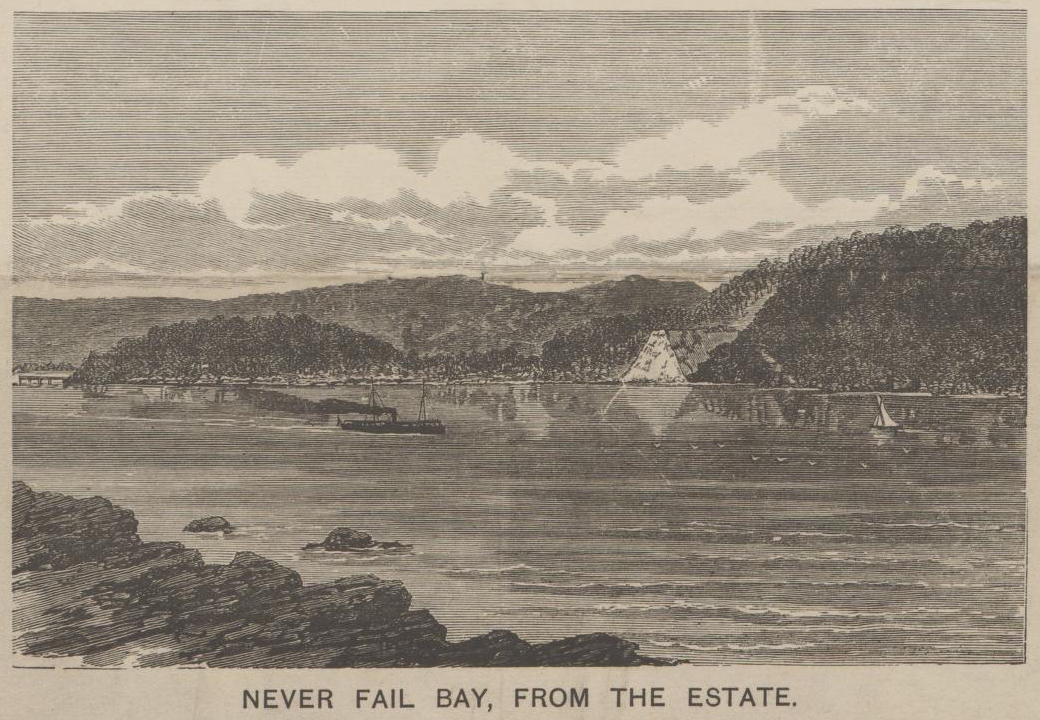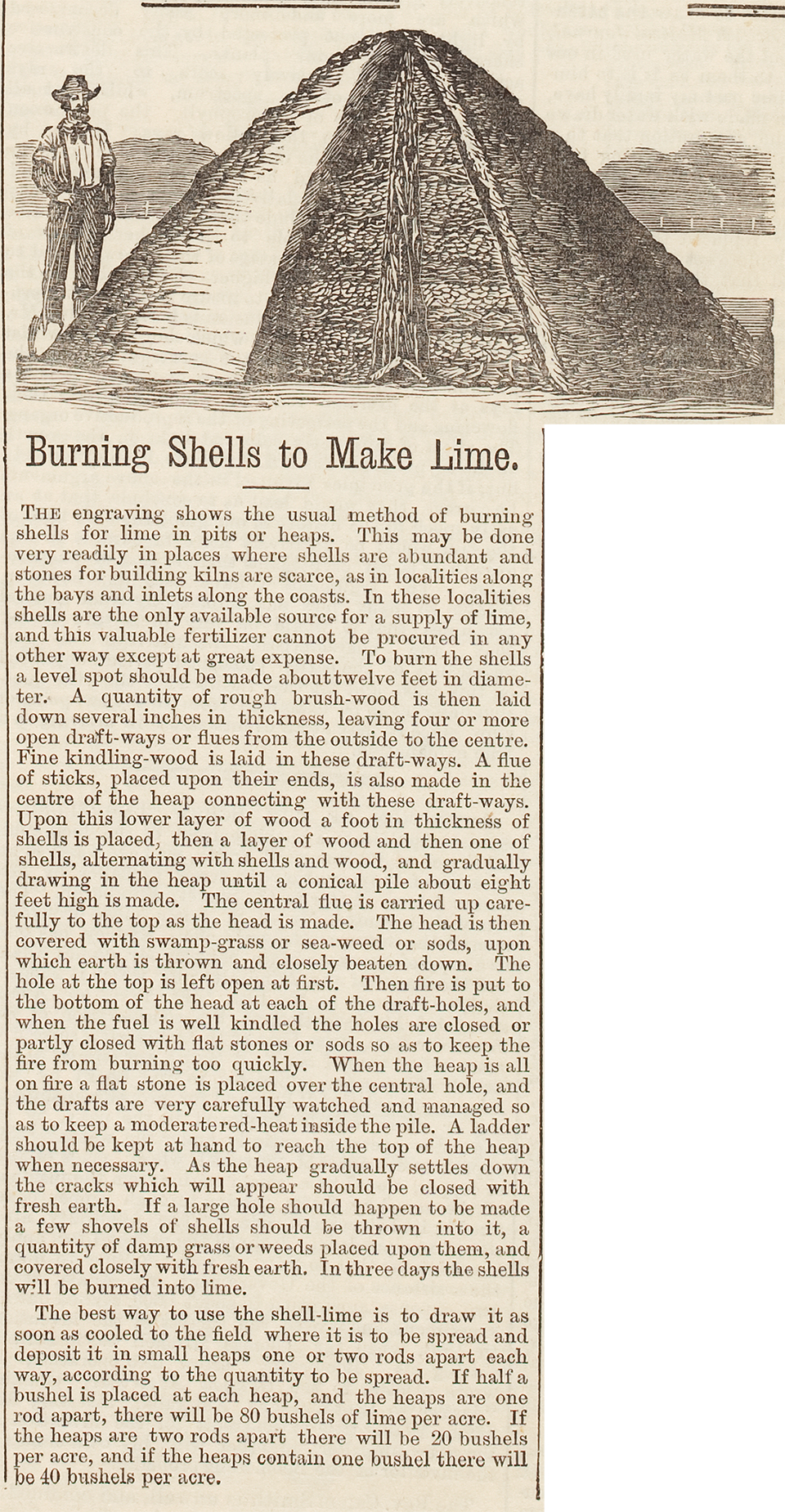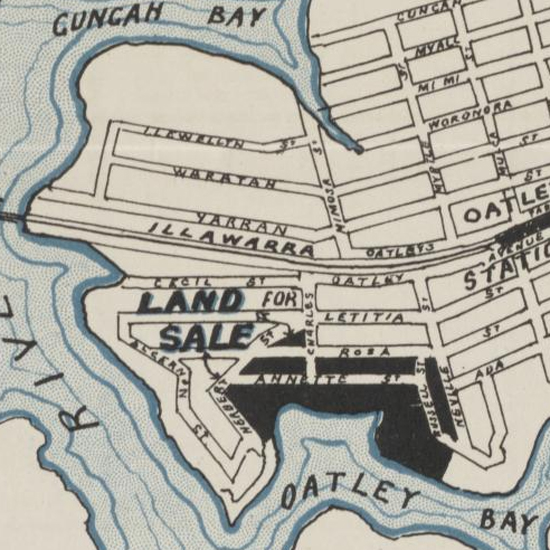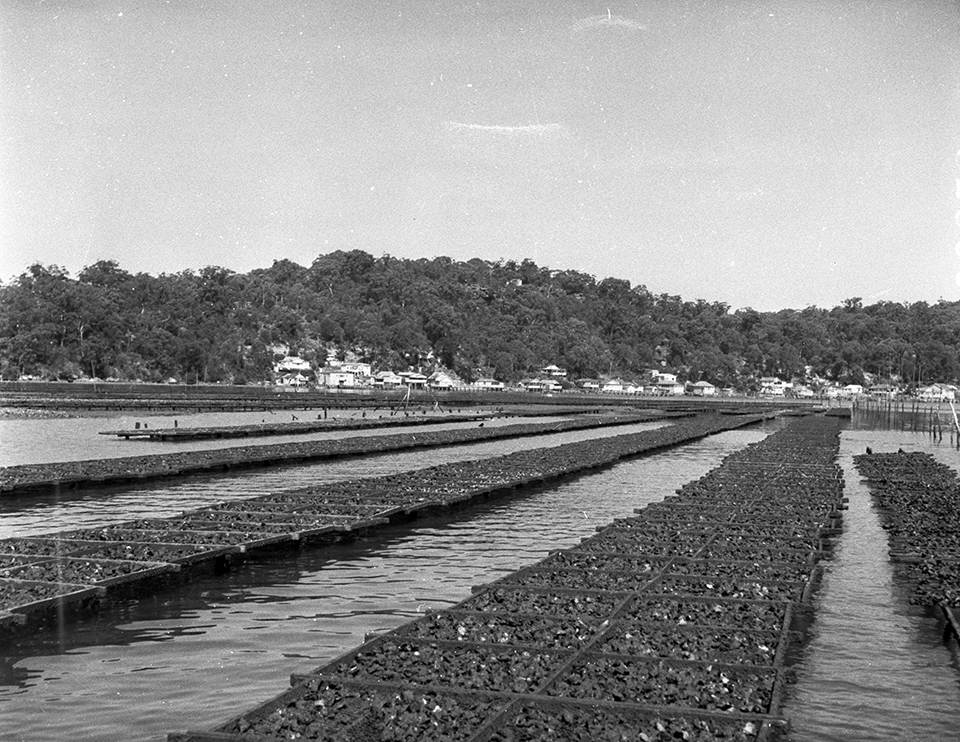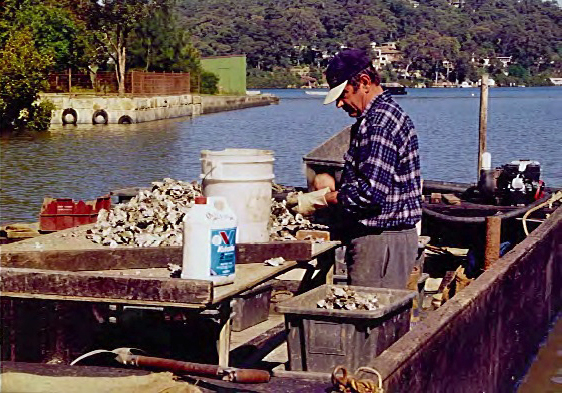The Dictionary of Sydney was archived in 2021.
Neverfail Bay, Oatley
Citation
Persistent URL for this entry
To cite this entry in text
To cite this entry in a Wikipedia footnote citation
To cite this entry as a Wikipedia External link
Neverfail Bay, Oatley
[media]The Neverfail Bay area was part of a land grant given to James Oatley in 1833 by Governor Bourke. It was named by early European settlers because of the availability of water in nearby springs and ponds. Earlier Aboriginal presence in the bay was found through oyster shell middens dating back thousands of years. [1]
James Oatley
James Oatley was a convict sent to New South Wales in 1815 but he quickly became valuable to Governor Macquarie for his ability to make clocks and watches. He created a successful watch and clock business in Sydney and had a farm in the now Beverly Hills suburb where his gravesite is commemorated with a small plaque. There is no evidence that James came to the suburb now called Oatley. The land passed to his son on James' death in 1839. The grant was sold to Charles Cecil Griffiths in 1881 for £10,000. [2] The railway arrived soon after and the land subdivided and sold.
Oyster farming
[media]The first European settlers to the area were oyster farmers, although in the early days the 'farmers' simply collected oysters and sold them for around 35 shillings a bag. Before this the shells in the area were burnt to provide lime for mortar and indeed the use of live oysters for lime was banned in 1868 to preserve them for eating. [3] Actual cultivation for oysters began around this time with the Derwent and Thompson, McCrae, Ward, Drake and Murray families. These families formed a Neverfail Bay community for several generations.
The use of wooden sticks and trays made oysters easier to breed, grow and harvest. The original method involved diving for oysters on the muddy river bottom. By 1884 the oyster industry had become regulated and leases were granted to farmers. These leases became a nuisance for tourists on the river as it prevented boats and pleasure craft from entering bays where oysters were growing. The farmers fought for their leases and they obtained government support.
Isolation
[media]The railway came to Oatley in 1886 and although it brought people to the area, Neverfail Bay remained isolated. Many items were delivered from across the Georges River from Como rather than the nearer Oatley as the steep hill to Oatley was a barrier for carts and drays. The street to Oatley was called Cecil Street but around 1915 changed to Wyong Street,
Fear of invasion
The land around the bay was resumed for military use during the Russo-Japanese war in 1905. Prior to this the Army held exercises to meet an 'invasion' of foreign troops landing at Bulli and moving north. During World War I, Neverfail Bay was also considered a strategic point because the nearby rail bridge might provide a route for invaders landing on the south coast to travel to Sydney. [4]
And end to war and isolation
[media]After 1918 the farming of oysters in the bay increased and the route to Oatley up Wyong Street was sealed, enabling traffic to negotiate the steep hill. This provided better access to markets for the oyster farmers. The residents of Neverfail Bay became residents of Oatley, thus marking an end to their isolation.
[media]By the 1950s, the methods of oyster farming had improved with the use of tar covered wooden [media]trays and crates where the oysters grew and could be collected easily on maturity. The natural oysters in the bay were the Sydney Rock oyster.
Pollution and contamination
The Georges River was gradually affected by Sydney's population growth and pollutants in the river began to affect the filter feeding oysters in the bay – especially after heavy rain. This lead to water treatment and purification methods developed by the industry whereby oysters from Neverfail Bay were subject to up 48 hours of filtration and exposure to ultraviolet light to kill any bacteria – a technique that is still used today. [5]
[media]In the 1990's a virus began to attack the oysters in the Georges River. It was named the QX virus (Queensland Unknown). The virus almost ended the Sydney Rock oyster industry in the Georges River. Bob Drake, a fourth generation farmer from Neverfail Bay, found that he could breed a new form of Sydney Rock oyster resistant to the QX virus, [6] as well as growing the larger Pacific Oyster in Woolooware Bay at the outlet to the Georges River. He is the only Sydney Rock oyster farmer left from the thriving Neverfail Bay group.
There are a few remains of barges and other equipment at Neverfail Bay, and lots of oysters' shells, but no oyster farming in the bay. Today, it is just another pleasant Oatley Street leading to the Georges River.
References
Noel Donnan and Keith Heckenburg (eds), Oatley Writes: A Souvenir Publication of Oatley's 150th Anniversary, 1833–1983, Oatley 150th Anniversary Committee, Oatley, New South Wales, 1984
DJ Hatton, The Development of the Suburbs Of Peakhurst, Penshurst, Mortdale and Oatley, Hurstville Historical Society, Hurstville, New South Wales, 1981
Elaine Howard, Oatley: The Working Man's Paradise, Lions Club of Oatley, Oatley, New South Wales, 1979
Oatley Heritage and Historical Sociwety records, www.oatleyhistory.org.au
Notes
[1] Noel Donnan and Keith Heckenburg (eds), Oatley Writes: A Souvenir Publication of Oatley's 150th Anniversary, 1833–1983, Oatley 150th Anniversary Committee, Oatley, New South Wales, 1984, p 22
[2] D J Hatton, The Development of the Suburbs Of Peakhurst, Penshurst, Mortdale and Oatley, Hurstville Historical Society, Hurstville , New South Wales, 1981, p 10
[3] Noel Donnan and Keith Heckenburg (eds), Oatley Writes: A Souvenir Publication of Oatley's 150th Anniversary, 1833–1983, Oatley 150th Anniversary Committee, Oatley, New South Wales, 1984, p 22
[4] Noel Donnan and Keith Heckenburg (eds), Oatley Writes: A Souvenir Publication of Oatley's 150th Anniversary, 1833–1983, Oatley 150th Anniversary Committee, Oatley, New South Wales, 1984, p 22
[5] Elaine Howard, Oatley: The Working Man's Paradise, Lions Club of Oatley, Oatley, New South Wales, 1979, p 26
[6] Rodger Robertson, ' Virus Kills Oysters', St George and Sutherland Shire Leader, 18 May 2011, p 18
.



